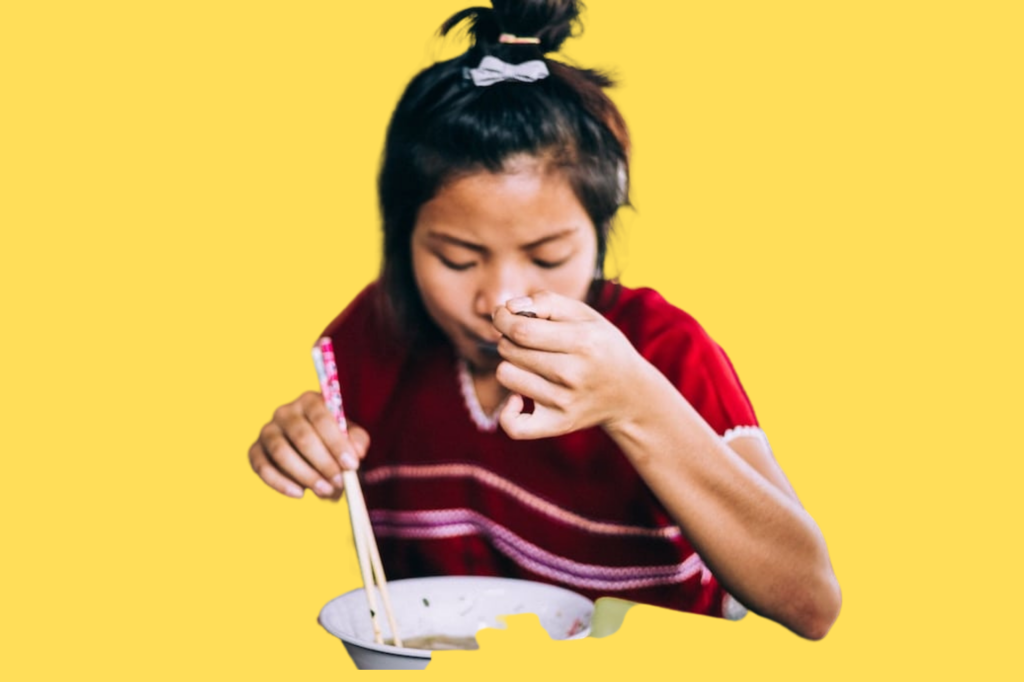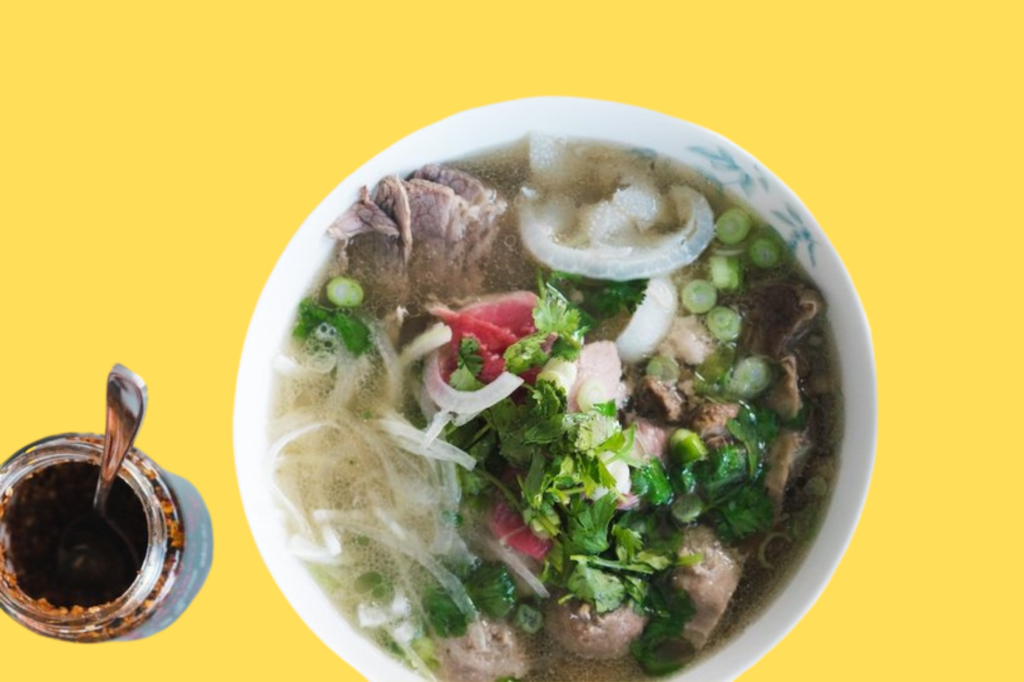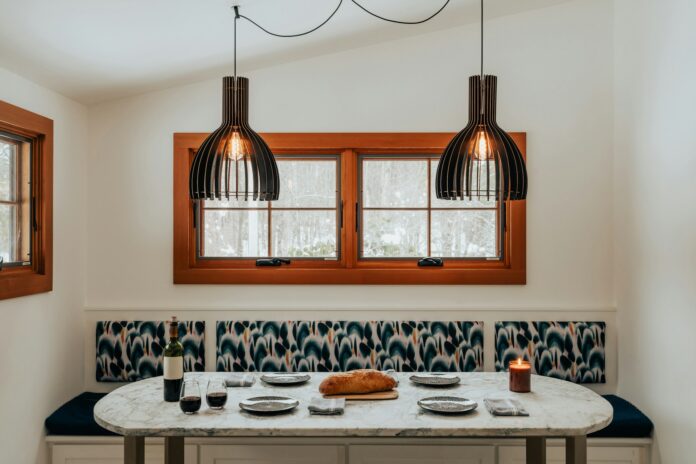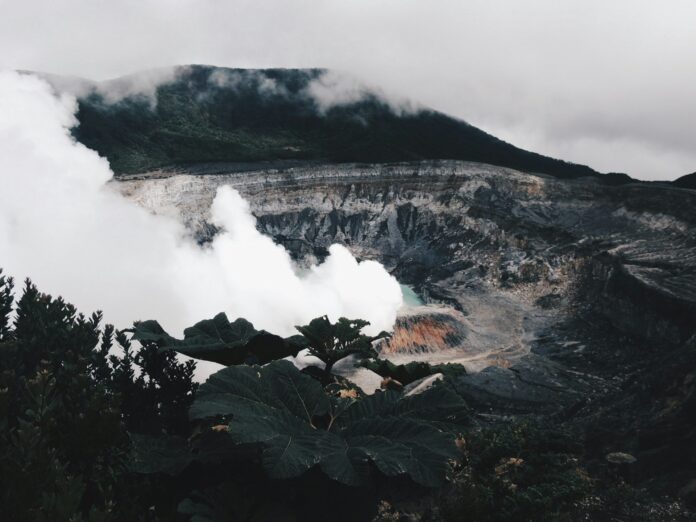Phở bò, the gorgeous, nourishing Vietnamese noodle soup of beef and bone broth, is a crowd-pleaser and a half. Deceptively simple, insanely delicious, a late night snack, a hangover cure for breakfast, a fulfilling lunch and more, all rolled into one and often enjoyed several times day, this truly is one of the world’s greatest bowlfuls.
It’s said that Vietnam’s capital Hanoi runs on the stuff, with no two establishments serving the same bowl and the best versions closely guarded secrets handed down through the generations.
The Hanoi version (the Northern rendition is arguably the original, reportedly coming out of Nam Dinh Province sixty miles from the capital) of the iconic dish is somewhat different to your UK high street rendition; low on embellishment and frippery, proudly austere, and distinctly savoury, not sweet. It’s almost clinical, and often delivered to the table in fittingly formal fashion. And where pho is concerned, less really is more, the power and poise of the broth given centre billing. We just love it.
This ain’t your average UK high street Pho, nor is this a recipe; we’ll defer to an expert, chef Andrea Nguyen. for that. Instead, these are some suggestions on what makes the Northern version so special. If you’re looking to create a Hanoi version at home, make sure you pay particular attention to these steps in your process; our 5 tips for making the best Hanoi style phở bò (beef noodle soup).
SAVOUR YOUR STOCK
The foundation of the dish, the backbone of the country, even; though the word ‘pho’ refers to the rice noodles, the dish itself is all about the broth.
This isn’t that type of typical broth which has been bubbling for years until dark, moody and rich. The best Hanoi style phở bò should be a delicate, nuanced affair, with the spices and aromats all present and correct but certainly not overwhelming the collective whole. Vietnamese friends used to often suggest that the cliched description of ‘layers of flavour’ wasn’t appropriate for a pho broth; it should be homogenous, with each ingredient playing their part to create a unified whole, rather than pops of selfish flavour battling for attention. We liked that notion.
The final product should have a few gobules of fat floating on the surface, but not many, and this is achieved through using the right bones from the off; a mixture of knuckle, marrow bone and oxtail is ideal, as these bring a gelatinous yet light mouthfeel. This is achieved by soaking the bones in several changes of cold water prior to starting your stock, and bringing them to the boil then draining a couple of times before the proper simmering begins.
Diligent skimming of that stock is also crucial so excessive fat doesn’t cloudy the broth or emulsify back into it, and any seasoning (just fish sauce and perhaps a pinch of rock sugar) is done right at the end of the process, just before serving.

CHAR YOUR AROMATS & TOAST YOUR SPICES
The nuance of pho is realised through its aromats and dry spices. You’re going to want to get as much subtle smoky flavour into your broth as possible, and Hanoi’s cooks do this by charring both ginger and shallot prior to adding it the broth. This is best achieved on a barbeque, but you can simulate a similar effect by holding the pieces in a pair of tongs over an open gas flame on your hob. That, or at a push, doing them in the oven under the grill until blackened. There’s no need to peel too scrupulously here (your pho broth will be passed several times), just scrape off the really black bits and pop the charred ingredients into the simmering cauldron.
Another defining feature of the best Hanoi style phở bò broths is the dry spice selection. Star anise, cloves, cinnamon, black cardamon and fennel seed are all ubiquitous, and should be dry toasted to bring out their essential oils and give another nod to smokiness prior to adding them to the broth. Doing so should be done within a tea bag or muslin cloth.

DON’T GO OVERBOARD ON THE ACCOUTREMENTS
Personal preference plays a part here, with bowls on the streets of Saigon, Nha Trang, and other southern cities usually arriving accompanied with a whole host of herbs, beansprouts, and several sauces. In our devotion to a Northern, Hanoi style pho we reject the frivolous extras; mint, coriander, Thai basil, those aforementioned bean sprouts…they all seem to muddy the broth and disrupt that coveted clarity we’ve spent so long nurturing.
Instead, as a garnish we’re simply using the green part of spring onions – finely sliced – and sliced white onion which has soaked in hot water for around fifteen minutes to remove its pungency and gaseous elements. In the last moments’ preparation stage, these are added to a clean bowl, along with your beef (more of that shortly) and pre cooked, chilled noodles, before hot broth is poured over to warm everything through.
RAW & BRAISED BEEF
Though phở bò is available in hundreds of iterations on the streets of Hanoi, and everyone has a preference, your main decision when ordering is what meat you’d like in your bowl. We love a mixture of oxtail, brisket and thinly sliced raw sirloin, for what it’s worth.
The oxtail will have been added to the broth around five hours before serving, lifted out just prior, and the meat picked from it. In many of Hanoi’s definitive street side pho purveyors, you’ll also see large hunks of brisket, already simmered, hanging in front of the shop on hooks. These will have spent around two hours in the simmering broth until semi-tender (the Vietnamese savour a slight chewiness to their meat and definitely plenty of fat still attached) and is sliced to order.
Raw, thinly sliced sirloin is also often added added to the bowl along with the other veef cuts (which is at room temperature), with the hot broth gently cooking it. Though that’s three types of beef, this is by no means a ‘meat feast’ affair; everything is added with restraint and good taste.

SEASONING SAVVY
No hoisin. No sriracha. No compromise.
The Hanoian pho table is moderate; so much care has been taken over the broth that to decimate it with various shop bought seasoning sauces would be sacrilige. That said, the broth has only been delicately seasoned up to this point, to allow for personalising at the table with a couple of select condiments.
At Phở Gia Truyền Bát Đàn (49 Bat Dan Street), which is arguably the greatest pho in the world, the shop owners don’t even serve lime or homemade chilli sauce, such is their faith in the broth they’ve spent generations cultivating. If you’re after piquancy, then it’s to come from chillis soaked in vinegar.
At another revered Hanoi Old Quarter joint, Phở 10 Lý Quốc Sư, sliced orange chillis (in keeping with their branding) are offered to bring a bit of pep and vigour to your bowl. They do provide sliced lime, but connoisseurs would add little else.
Alongside, if you have the time, then do endeavour to make the ubiquitous, delicious quẩy, a savoury, deep fried type of doughnut which is just perfect for dunking in the soup.
Serve with iced jasmine tea, not beer, and you’re good to go!




